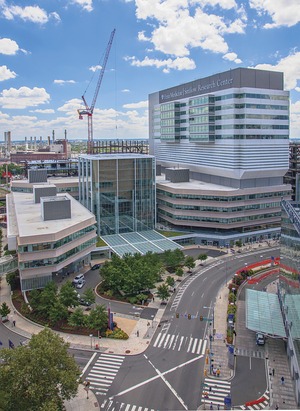
Two separate conferences held in Manhattan recently emphasized two major themes in hospital and health-care construction: Project teams must be flexible as client demand evolves with changes in the marketplace, and hospitals themselves must be made more resilient to major weather events, such as Superstorm Sandy.
"The future is in ambulatory care," Gary Acord, executive director of planning, design and construction at Memorial Sloan Kettering Cancer Center, told attendees at ENR New York's "The Future of Health-Care Construction" conference, held on Feb. 26. "We don't predict a lot of growth in inpatient facilities" or in pure research sites. MSKCC forecasts annual project capital spending at $100 million to $150 million.
As sector demand continues to shift toward these smaller, off-site facilities, institutions expect greater flexibility from their project teams in terms of schedules, costs and whatever unforeseen events may arise, speakers said. These institutions also expect to be given a full picture of costs before the work starts.
"Tell us the bad news at the beginning. … Don't tell us at the end that we need new risers or whatever to support the design," says Marsha Powell, engineering services director at the NYC Health and Hospitals Corp. "Our mandate from our board now is to know what projects cost."
Even old, established institutions such as the University of Pennsylvania Health System—which includes the 263-year-old Pennsylvania Hospital—have robust capital plans that call for heavy investment in satellite outpatient centers.
UPHS's "strategy in construction" includes building in program, phasing and technology flexibility, said Kevin Mahoney, UPHS executive director. It also includes integrating ambulatory care, education and research into one complex, he added. UPHS has a massive, long-term building effort under way to keep up with future demand, he says. This effort includes a $1-billion expansion at its clinical, research and education Penn Medicine complex in Philadelphia.
Separately, panelists involved with four New York City waterfront hospitals that were devastated by Sandy said that, while some progress has been made since the Oct. 29, 2012, storm, more work is required. After Sandy's waters surged through these facilities, forcing evacuations and multi-week shutdowns, the hospitals are rebuilding to higher standards—and higher floors—and taking into account other severe weather events.
"We've had tornados, earthquakes and two hurricanes. It always feels like something new," Daniel Zarrilli, resiliency director in the New York City mayor's office, said at the "After Sandy: Recovery and Resiliency at NYC's Hospitals" panel discussion, also held on Feb. 26. "So, we have to make sure to not always focus on what's happened last but take an all- hazards approach." While the city has been criticized for moving slowly after the storm, it pledged $20 billion last year to enact 257 initiatives, including safeguarding infrastructure. Zarrilli says that most of the $20 billion has been funded.
"In a lot of ways, this has been a great experience for us because we lived through it, we experienced the risk, and we are taking every measure that we can to ensure that it will never, ever happen again," says Paul Schwabacher, a facilities management vice president at the New York University Langone Medical Center.
Of the six city hospitals the storm temporarily closed, Langone, in midtown along the East River, may have been hit hardest. Sandy washed in at about 10 ft, and water pressure crumpled a basement door, according to a diagram and photo that Schwabacher showed. The hospital didn't reopen until Dec. 27, 2012.
Like other institutions, Langone has elevated its critical infrastructure. For example, its emergency power systems have been moved from the basement up two floors, or to a 20-ft elevation; elevators now stop two levels above the basement. Along the facade by the emergency-room entrance, contractors raised window sills by a few feet so that windows are less vulnerable.
While most of the attention post-Sandy has focused on upper stories, some hospitals—for instance, the Bellevue Hospital Center complex, near Langone—also have installed perimeter walls. Built on fill hauled to New York City from England during World War II, Bellevue evacuated 723 patients and took on more than 7 million gallons of water in its 182,000-sq-ft basement during Sandy, said Michael Rawlings, facilities director.
However, a hospital's fixed barriers can be potentially harmful if the staff itself needs to evacuate, says Daniel Collins, a facilities director at Coney Island Hospital. Hospitals always need to be able to accept new patients. "We are not comfortable about being able to stay and maintain services with a wall," he adds.


Post a comment to this article
Report Abusive Comment